The 3 Schools I Attend by Yuliya K. '18
Harvard, High School, MIT
On Tuesday and Thursday mornings, when the sun has not yet heated the air to its full potential, I rush to catch the outbound T train. Two stops later, I get out facing Harvard Hall. There, on the second floor, I have PHIL 179, Race and Social Justice.
I traverse the Yard on Mondays, Tuesdays, Thursdays, and Fridays. On Wednesdays, I may drop in for office hours. The Harvard T station has become sickeningly familiar and frustrating, for I still haven’t found the optimal waiting spot on the platform to minimize exit time upon arrival. Always room for experimentation.
If the amusing rivalry of Harvard and MIT was ever unclear, it makes sense when you get stuck between the two. Neither college is, of course, superior, but the differences cannot be resolved. Harvard and MIT are two T stops and worlds apart.
The most often cited difference is in the color schemes. MIT is grey. Harvard is red and occasionally green with slithering ivy.
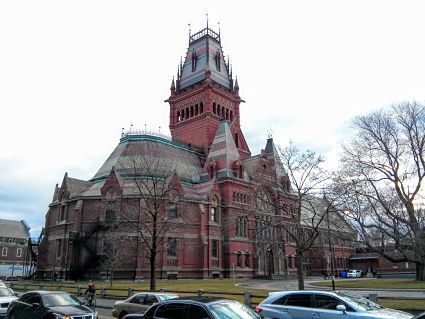
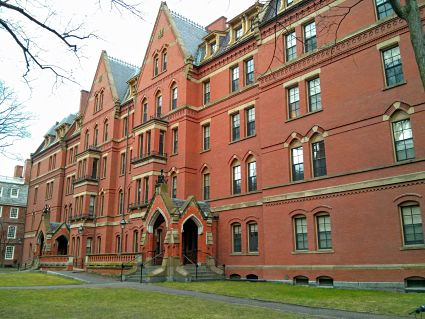
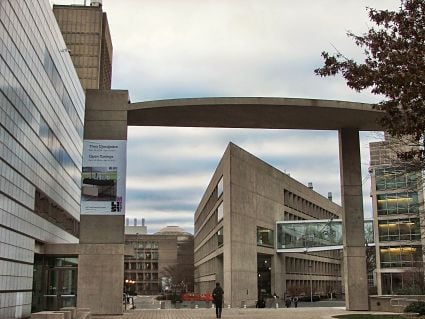

MIT has abstract and random tech-y installations as decorations. Harvard has solemn portraits of old men looking smart in decorated frames. Sometimes on mahogany walls. It’s not diverse, but still a bit impressive.
And just look at the two campus maps. MIT is a school of numbers. Harvard, of words. Even PHIL 179 becomes HAA.2457 on my transcript. The MIT version has one digit more.
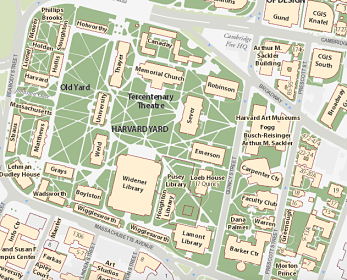
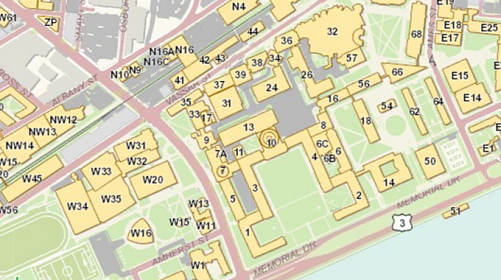
At MIT, lecture is supplemented by recitation, led by TAs (Teaching Assistants). At Harvard, this work is done in discussion section, led by TFs (Teaching Fellows). A Departmental Writing Fellow, rather than a Writing Advisor, helps with papers.
The styles of instruction are different as well. At Harvard, philosophy lectures resemble those from movies. At MIT, the HASS classes I’ve taken are small and personal. This isn’t to say one type is better. The difference is all about supply and demand.
At Harvard, I feel like a secret observer, a double agent, if you will. I ogle at the elegant architectural designs, stare longingly at the beautiful Widener Library (which houses over 3 mln books on 57 miles of shelves and is one of the largest open-stack libraries in the world). I have access to it with my Participant Harvard ID. I “participate” in Harvard College now.
What’s even more exciting is now I have access to 47 million library items from 121 libraries. 5 million items from the MIT Libraries, plus fiction from the “world’s largest public open-shelf collection of science fiction” at the MIT Science Fiction Society Library, which has “90% of all speculative fiction ever published in English, spanning fantasy, hard sf, and horror … [and] 98% of all science fiction and fantasy magazines ever published in English” (source). 19 million from the 73 Harvard Libraries, which comprise the “oldest library system in the United States and the largest university library and largest private library system in the world.” Plus 23 million items from the Boston Public Library, the second largest public library system in the U.S. (Disclaimer: these figures may vary depending on the counting methodology used.)
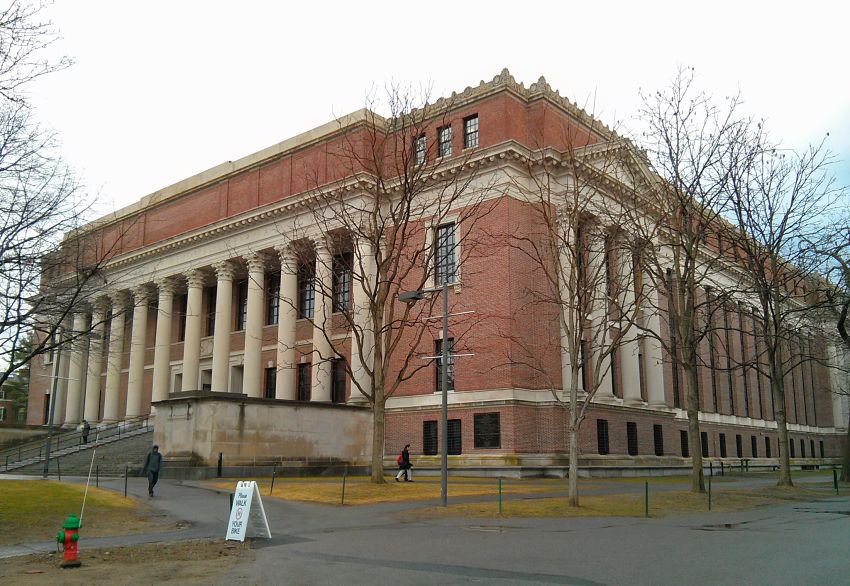
On the way back from Harvard, I look forward to seeing familiar faces and places again, including the sunny Boston skyline. Being a double agent can be exhausting. I’m used to different college ways and interactions, a different campus layout. I look forward to lounging in our non-mahogany rooms.
Despite that, I’d recommend anyone interested in the liberal arts to consider cross-registering for a Harvard class. The commute is only ten minutes. You get 1,000+ class options per semester, plus grad school classes for the more ambitious (which makes for a total of 4,900+ options). You also get an experience of a contrasting culture and learning style. At Harvard, I’m learning to approach philosophy texts with high rigor and analytical depth. The discourse is challenging and formal.
Luckily, cross registration is quite simple, especially on the Harvard side, which is now paperless (sorry, MIT). A regular Harvard class is worth 12 MIT units (also a full class). You get graded according to MIT policies and receive credit at no extra monetary cost. Plus, you get a novel view on college education. It’s great, really. (For a different blogger perspective, here’s a wonderful post from Jess K. ‘10 on cross registration, “Half Harvard, Half MIT”)
*****
The fourth weekly time I travel to the Yard, I don’t linger. Past the red square buildings is a gray rounded one, surrounded by rowdy teenagers of ages fourteen to eighteen. This destination is a high school.
For 11.124 Introduction to Education: Looking Forward and Looking Back on Education, one of the requirements is classroom observation. Each class participant is placed with a master teacher in a middle or high school in the MIT area to observe and assist with a STEM class for approximately twenty hours, or about seven weeks of three-hour visits.
My placement is in a charter school freshman Physics class. Every week, I don my nicest clothing to return to high school.
High school is, well, interesting. I get to stand in people jams in stairwells and shudder at the thought that the shoving students are up to six years younger. I have to come to terms with the fact that I have, in fact, left high school. Forever.
I get to stride proudly down the well-polished hallways with my neon visitor sticker, as well as the knowledge that I no longer need to fit into any social category nor wonder about image. I get keys to the staff bathroom, too. It’s a powerful feeling.
The other perk of my second school, the High School, is the ability to experience what a large student community looks like from the outside. I spent most of my high school days in a small alternative program, which left me quite puzzled about the success of High School Musical and similar films. Now I finally see “real” high school interactions.
There are “Do Now” and “Exit Ticket” activities, various folders and worksheets, and assigned seating and routines. Bathroom passes are collected at the end of the week so that students can get extra credit points for not using the restroom. There’s even a digital hall pass timer for restroom-goers.
I missed all that. Now I’ll never improve my grades by holding my bladder. (Though I do wonder how that policy would work at MIT. Would students ever use the bathroom?)
Outside the routines, high school is fun. You get to drop eggs (and hope they don’t break) to learn about momentum, or play physics games to reward good classroom behavior. You get short daily homework assignments. No majors, no high stakes. No thoughts of figuring out life.
In the case of high school, being a “double agent” is energizing. I’m the older, “more powerful” outsider. I get valuable lessons in public education from observing and interacting. The master teacher is excellent, and so are the 37 students whose names I’m almost confident I remember.
*****
The third school is, of course, MIT. Where it all began. I will not describe this one much.
No need to commute or observe here. I know the practices and customs. I wake up to see my classroom from the window. I can wear mismatched socks and plop down on the lounge couches and feel completely at home.
At MIT, I know exactly what I look forward to at the start of a long weekend: to settle down with old friends in a familiar home.
*****
P.S.: MIT Solar Car Electric Vehicle Team is on their way to the World Solar Challenge in Australia! Support them by following the event on their website here!